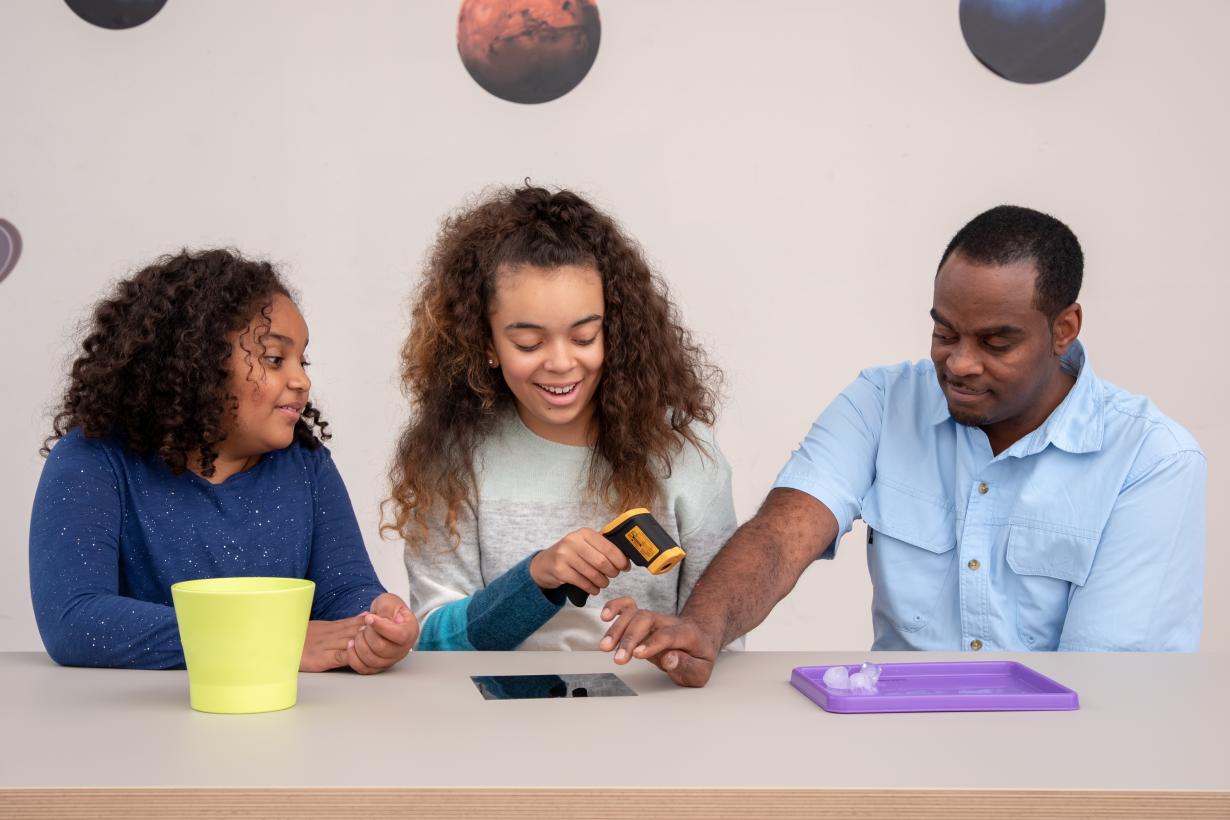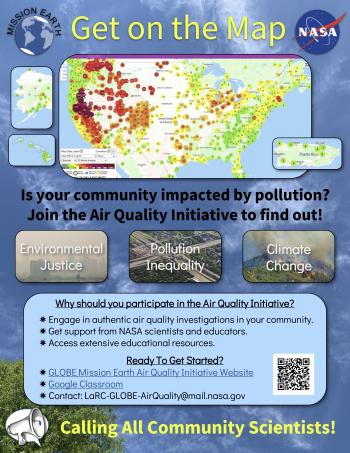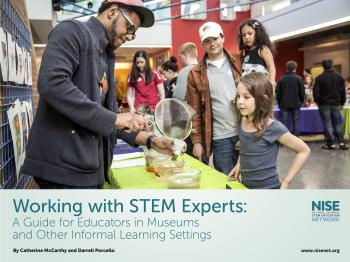
Air Quality
NISE Network Activities about Air

Exploring Size - Moving Molecules

Molecules in Motion

Exploring the Solar System: Stomp Rockets

Exploring Earth: Temperature Mapping

Exploring Earth: Investigating Clouds

Climate Change

Air Quality Resources
Air Quality Data
- EPA Air Now Interactive Map - Get air quality data where you live by entering your zip code: https://www.airnow.gov
- NOAA AerosolWatch
https://www.star.nesdis.noaa.gov/smcd/spb/aq/AerosolWatch/ - PurpleAir - view real-time PM2.5 data on a worldwide map
https://www.purpleair.com/map - NASA Worldview satellite imagery organized by data type and event type
https://worldview.earthdata.nasa.gov - Wildfire Smoke impacts in the the National Climate Assessment
https://nca2023.globalchange.gov/chapter/focus-on-2/
Air Quality Index and Alerts
- EPA Air Quality Index: https://www.airnow.gov/aqi/aqi-basics/
- EPA Air Quality Flag program: https://www.airnow.gov/air-quality-flag-program/
- NOAA Weather Service air quality alerts: https://www.weather.gov/safety/airquality
Educational Resources and Activities
- EPA Air Now: https://www.airnow.gov/education/
- EPA Air Quality Awareness Week: https://www.epa.gov/air-quality/air-quality-awareness-week
- Howtosmile.org air activities for informal science audiences: https://www.howtosmile.org/resource-search/air
- UCAR Center for Science Education: https://scied.ucar.edu/teaching-box/air-quality
- CIRES Center for Education, Engagement and Evaluation (CEEE) resources
- EPA Indoor Air Quality tools for schools action kit:
https://www.epa.gov/iaq-schools/indoor-air-quality-tools-schools-action-kit - EPA Air Quality and Energy Choice STEM Activities for Educators:
https://www.epa.gov/air-research/air-quality-and-energy-choice-stem-activities-educators - GLOBE air quality initiative activities:
https://www.globe.gov/web/mission-earth/overview/air-quality-initiative/learning-activities - CLEAN collection of climate literacy materials: https://cleanet.org
- Climate change resources: https://www.nisenet.org/climatechange
- NASA Air Quality lessons and activities: https://mynasadata.larc.nasa.gov/phenomenon/air-quality

Citizen and Community Science Projects
-
Community Science Opportunity:
You can participate in the GLOBE Mission Earth Air Quality program- Engage in authentic air quality investigations in your community.
- Get support from NASA scientists and educators.
- Access extensive educational resources.
https://www.globe.gov/web/mission-earth/overview/air-quality-initiative
-
SciStarter Air Quality Projects
NASA Air Quality Missions
NASA has a fleet of Earth-observing satellites whose instruments observe our planet's oceans, biosphere, and atmosphere. Several of these satellites have instruments that observe air pollutants around the world. The data collected are used by air quality managers and researchers studying the impact of air pollution on human health and agriculture.
https://airquality.gsfc.nasa.gov
Upcoming Missions
-
MAIA: The Multi-Angle Imager for Aerosols instrument (MAIA) is scheduled to launch in 2022. MAIA will study the effects of particulate matter on human health in both the short term and the long term, and will also collect data on naturally occurring and anthropogenic air quality events.
https://maia.jpl.nasa.gov/ -
PACE: The Plankton, Aerosol, Cloud ocean Ecosystem (PACE) satellite, scheduled to launch in 2022, will continue NASA’s efforts to observe the Earth’s oceans. PACE will carry two primary instruments. The first, an ocean color instrument, will collect data on global ocean biology. The second, multi-angle polarimeters, will measure how sunlight changes as it passes through clouds, aerosols and the ocean, providing detailed information about the Earth’s atmosphere and oceans.
https://pace.gsfc.nasa.gov/ -
TEMPO: The Tropospheric Emissions: Monitoring of Pollution (TEMPO) instrument is scheduled to launch in 2022. TEMPO will use a spectrometer to make hourly measurements of ozone, nitrogen dioxide and other air pollutants across North America.
http://tempo.si.edu/

Finding STEM Experts
- See the "Space and Earth Science" and "Environmental Science" sections sections of Working with STEM Experts: A Guide for Educators in Museums and Other Informal Learning Settings
